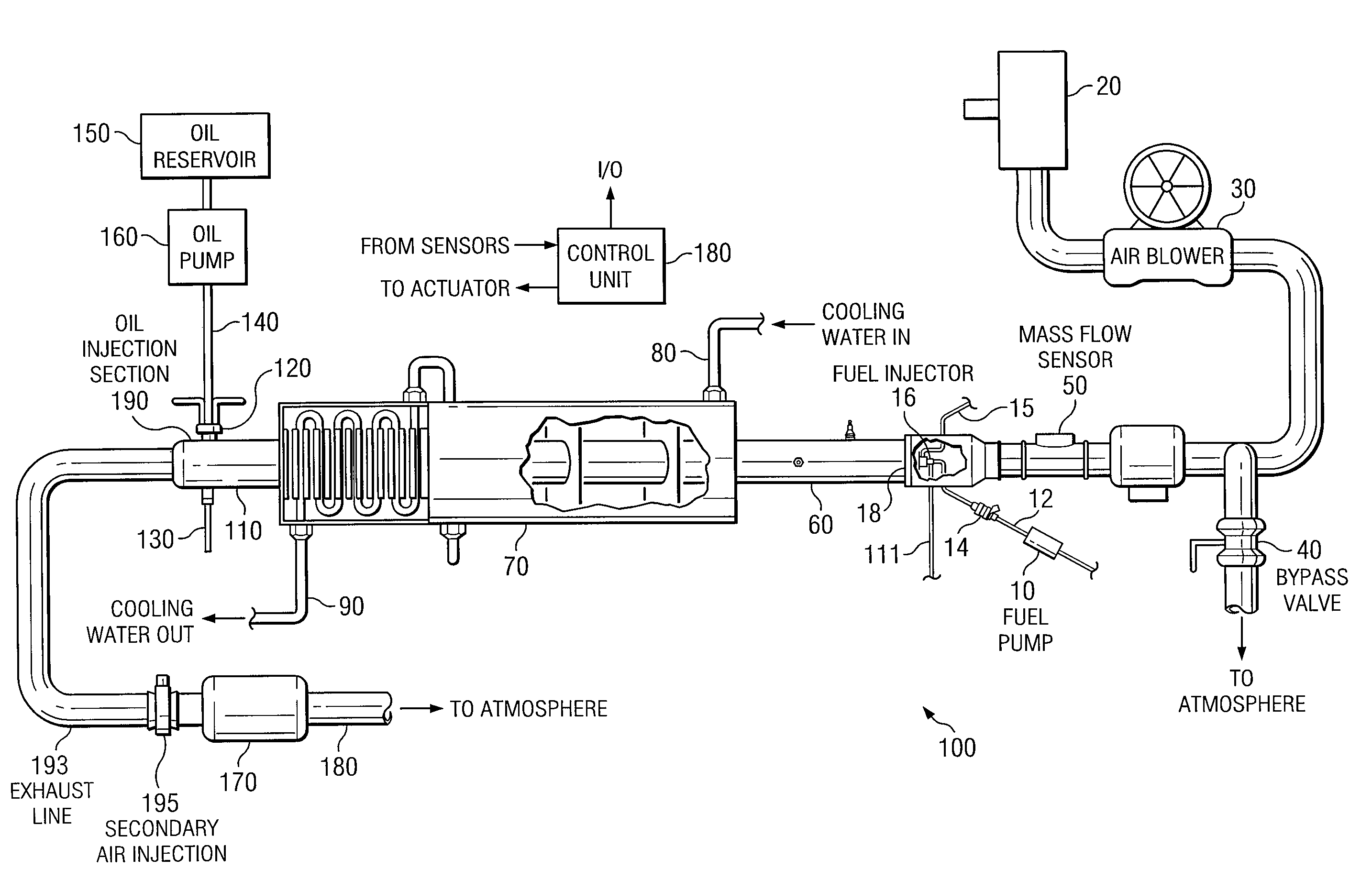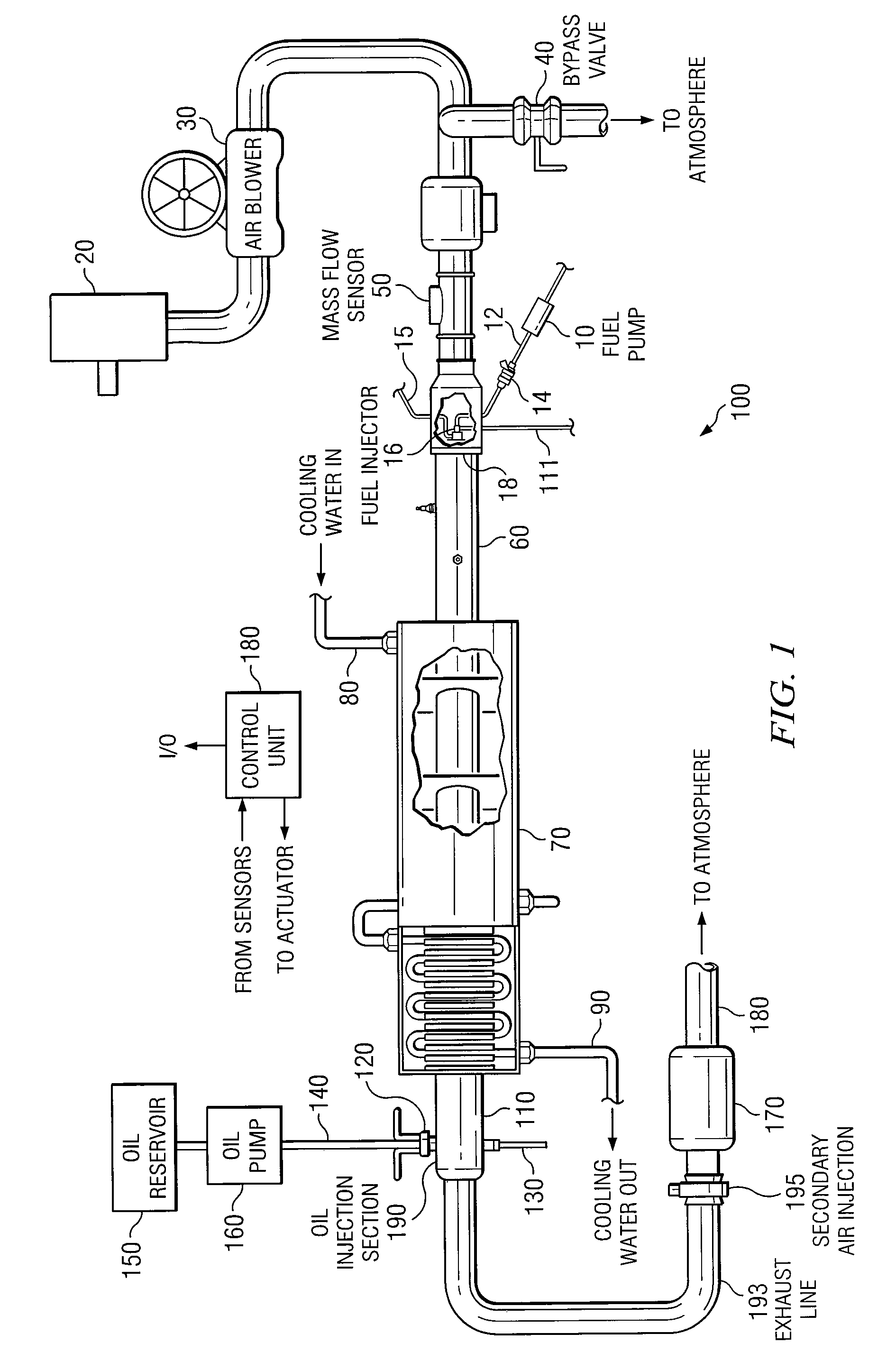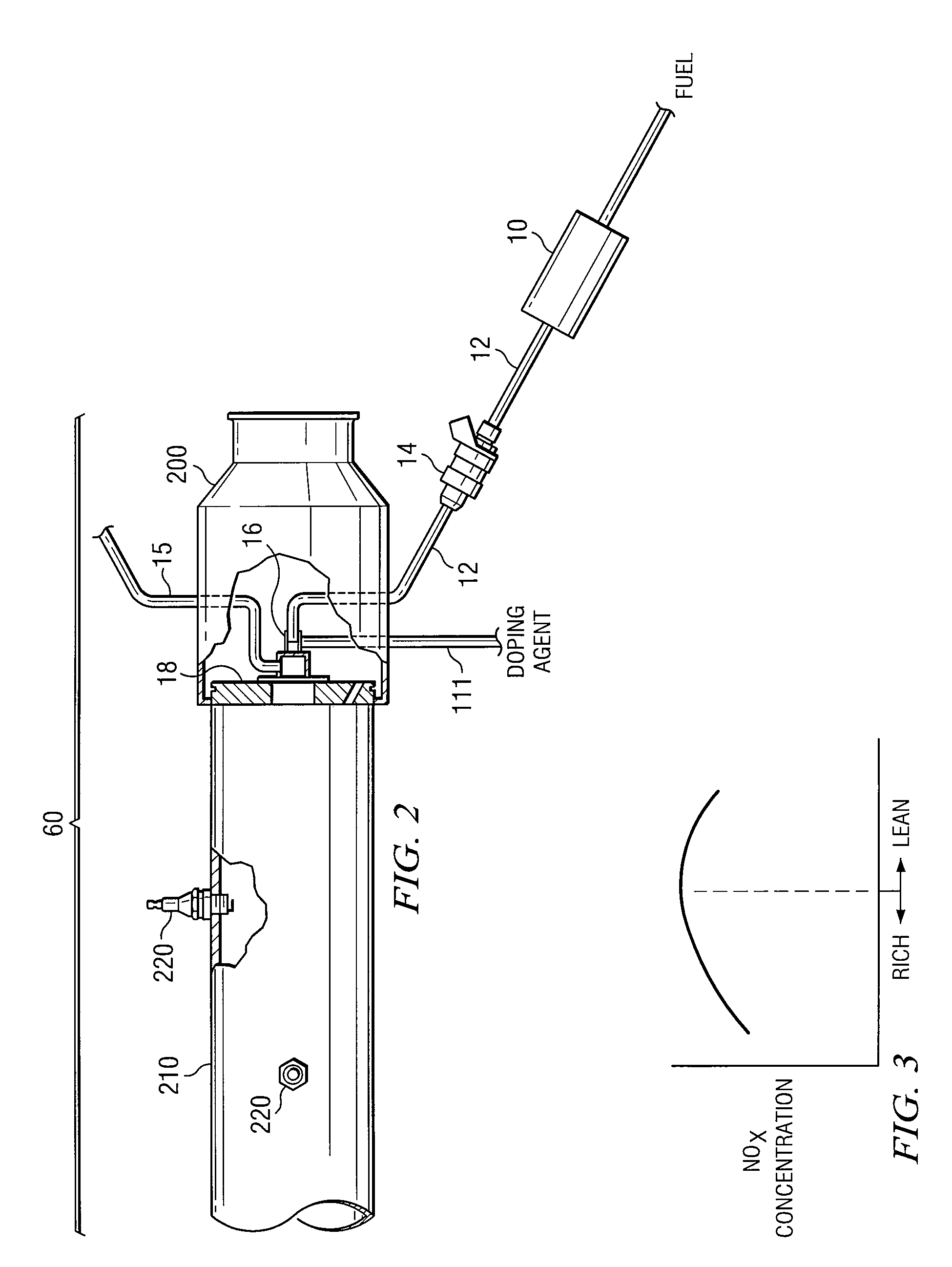NOx augmentation in exhaust gas simulation system
a simulation system and exhaust gas technology, applied in the field of no, can solve the problems of inconvenient use of real engines for long-term testing, high maintenance costs, and inability to conveniently permit the separate evaluation of individual variables of real engines
- Summary
- Abstract
- Description
- Claims
- Application Information
AI Technical Summary
Benefits of technology
Problems solved by technology
Method used
Image
Examples
second embodiment
[0064]FIG. 4 illustrates the invention. Like the embodiments of FIGS. 1 and 3A, a nitrogen-containing compound is mixed with fuel prior to reaching the flame of burner 60. However, in the embodiment of FIG. 4, the doping agent is introduced in gaseous form via the air assist line 15. Like the embodiment of FIG. 3A, a valve and a control system may be used to control the amount of doping agent delivered into the air assist line. An example of a suitable doping agent is ammonia gas. In the embodiment of FIG. 4, the doping agent could be nitrogen itself.
third embodiment
[0065]FIG. 5 illustrates the invention. Supplemental NOX is introduced into the exhaust line downstream burner 60. The supplemental NOX is produced by reacting NH3 in an oxidation catalyst 501 at an elevated temperature. A typical temperature at catalyst 501 is 300 degrees Centigrade. For example, a nitrogen-containing compound is delivered to catalyst 501, together with air at a temperature of 300 degrees. The air and NOX out of catalyst 51 is injected directly into the exhaust flow to increase the level of exhaust NOX. The concentration of NOX in the exhaust may be controlled by using a control unit (stand alone or integrated into control system 180) which controls the amount of NOX generated by catalyst 501, such as by varying the air or reactant flow through, or temperature of, catalyst 501. Alternatively, the flow of NOX could be controlled by using a valve 502.
[0066]In sum, any combination of the following methods could be used for augmentation of NOX in the exhaust generated ...
PUM
| Property | Measurement | Unit |
|---|---|---|
| diameter | aaaaa | aaaaa |
| temperature | aaaaa | aaaaa |
| Durability | aaaaa | aaaaa |
Abstract
Description
Claims
Application Information
 Login to View More
Login to View More - R&D
- Intellectual Property
- Life Sciences
- Materials
- Tech Scout
- Unparalleled Data Quality
- Higher Quality Content
- 60% Fewer Hallucinations
Browse by: Latest US Patents, China's latest patents, Technical Efficacy Thesaurus, Application Domain, Technology Topic, Popular Technical Reports.
© 2025 PatSnap. All rights reserved.Legal|Privacy policy|Modern Slavery Act Transparency Statement|Sitemap|About US| Contact US: help@patsnap.com



